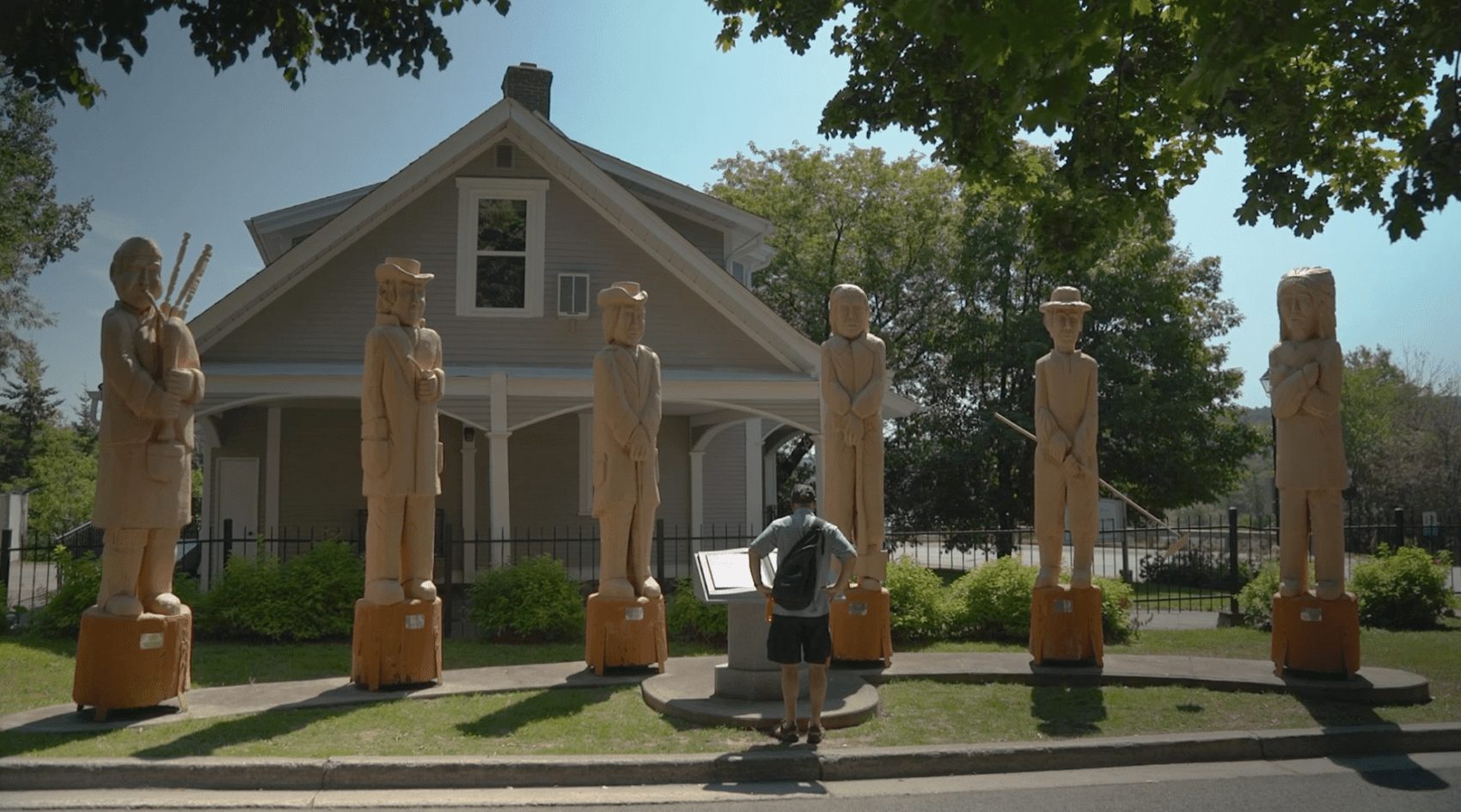Edmundston, Madawaska and the heritage of the Acadian Brayons

The Madawaska region in northwestern New Brunswick served as a refuge for Acadians who wanted to start over after the Great Deportation. In 1785, many of them settled among the Maliseet, who had always hunted and fished in the region. At the beginning of the 19th century, like today, logging was the driving force behind Madawaska’s economy. The delineation of the borders between New Brunswick, the United States and Quebec in 1842 and 1851 divided the Acadian community and fostered the emergence of a uniquely Brayon culture. The Acadians of Madawaska continued to maintain close ties with Acadians in Aroostook county in the United States, and forged new ties with Quebecers in Témiscouata, two very similar neighbouring regions. The resulting cultural amalgamation, enriched by Indigenous, Scottish and Irish influences, is the pride of the Brayons, who celebrate their identity at the Foire brayonne in Edmundston. They also showcase their history and their roots at various museums and interpretation sites throughout Madawaska.
To learn more…
Edmundston: Economic and cultural centre of Madawaska
Edmundston is one of the most Francophone cities in Canada outside Quebec. More than 90% of its population speaks French as a first language. One of its most famous attractions is the New Brunswick Botanical Garden, which showcases more than 80,000 plants over seven hectares, and whose Mosaiculture exhibitions represent various elements of the regional heritage. Edmunston has two museums devoted to different chapters of the region’s history, in addition to the Petit-Sault Blockhouse interpretation centre and the Centre d’interprétation des voies ferrées Du Réel au Miniature, which illustrates the role of the railway in New Brunswick.
The Madawaska Historical Museum has a collection of 3,000 forestry, textile, agricultural and everyday objects open to the public. Its new permanent exhibition, Frontières contestées, familles retrouvées relates to the delineation of the border between New Brunswick and the United States and its consequences. The Religious Hospitallers of St. Joseph Museum sheds light on the history of the first hospital in Madawaska, Hôtel-Dieu de Saint-Basile through numerous photographs and remarkable objects from the time. In the same sector of the city, the historic Maison Louis-Cyr built in the early 19th century is an example of the region’s original architectural heritage. The monument dedicated to the Acadian Odyssey and the Great Deportation can also be found in this sector. Microbrewery Brasseurs du Petit-Sault in Edmundston pays homage to history by naming all of its beers after influential people and events in Madawaska.
Cultural life is driven by the local campus of the Université de Moncton. The Centre des arts d’Edmundston also offers a wide range of activities. Galerie Colline exhibits visual art works, and, in April of each year, the book fair celebrates new French-language literary offerings. Of the many performances given each year, including the jazz festival in June, the Foire brayonne festival in July is known for its large outdoor gatherings, the diversity of activities aimed at young people and those who are young at heart, and for its emphasis on the Brayon identity. Ployes, traditional Brayon thin buckwheat pancakes, are always on the menu, but are especially popular at the Foire brayonne.
Elsewhere in the region
Some localities showcase other aspects of Madawaska’s history. At the Joseph B. Michaud Blacksmith Museum in Saint-François-de-Madawaska, for example, blacksmiths demonstrate the almost-lost skill of these craftsmen who played a key role in their communities at the beginning of the 20th century. In the neighbouring municipality of Clair, the local historical society provides an opportunity to dive head-first into 19th-century village life by visiting the historic Daigle/St-Jean house, built in 1848, as well as a chapel, a barn, a logging camp and a cookroom. The objects on display in these buildings, as well as the history and anecdotes recounted by guides in full costume allow visitors to travel back in time.
In Saint-Hilaire, the Maxime Albert Complex and an exhibition commemorating prohibition in the 1920s and 1930s tell the story of the booming bootlegging trade in Madawaska, and the local homemade alcohol known as bagosse. Apparently, Maxime Albert was the head of an important bootlegging network that extended to the Maritimes, Quebec and the United States. He would have even traded with well-known personalities like Al Capone and Sam Bronfman. At Kedgwick in Restigouche county, a replica of a loggers camp active from 1865 to 1963 shows how logging was done before the industry was modernized. No fewer than 14 restored buildings are open to visitors. Guides explain heritage techniques and the tasks that would have filled a typical logger’s day. Some guides share their own experiences working in the last logging camps.





